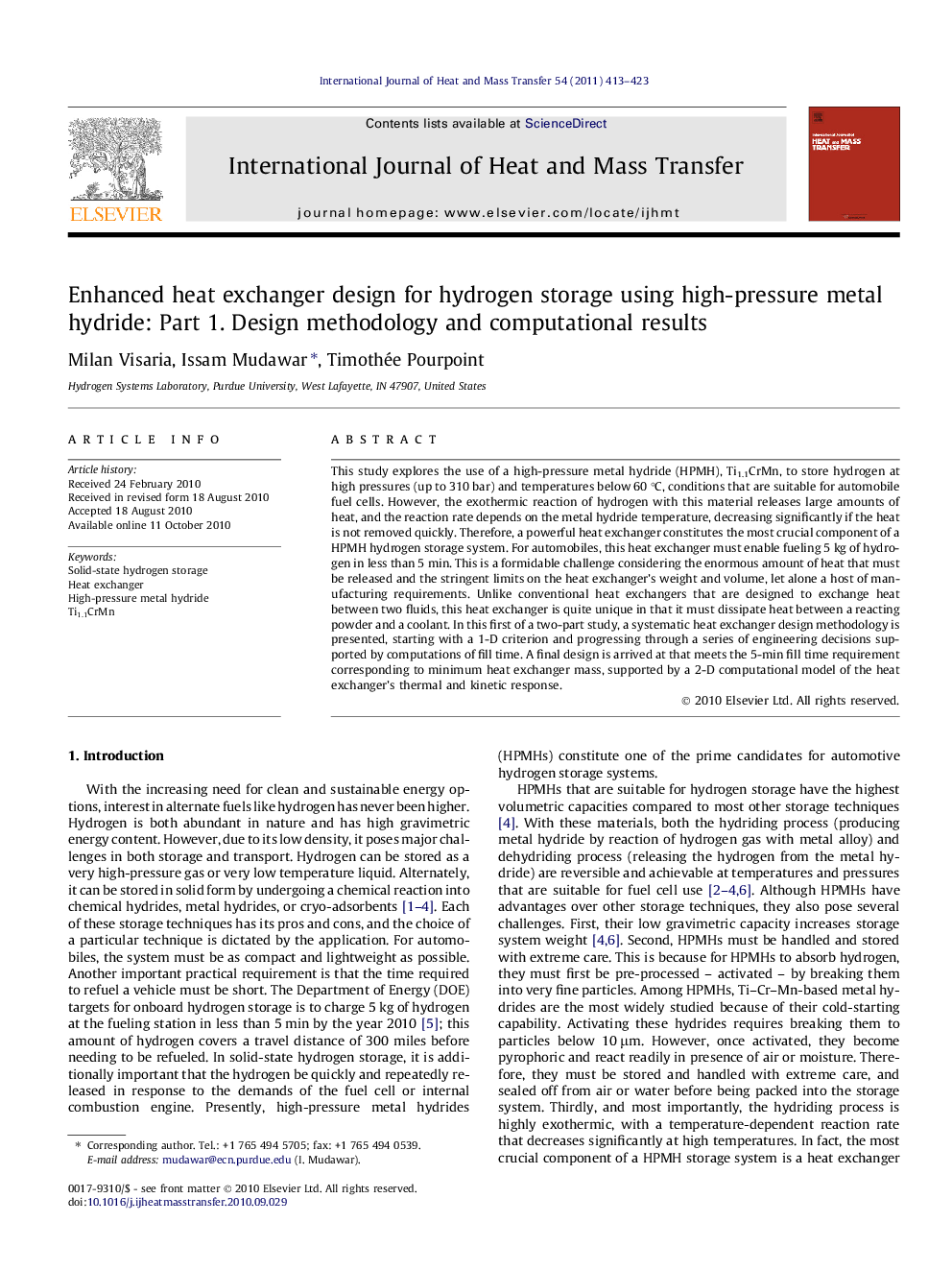| Article ID | Journal | Published Year | Pages | File Type |
|---|---|---|---|---|
| 660551 | International Journal of Heat and Mass Transfer | 2011 | 11 Pages |
This study explores the use of a high-pressure metal hydride (HPMH), Ti1.1CrMn, to store hydrogen at high pressures (up to 310 bar) and temperatures below 60 °C, conditions that are suitable for automobile fuel cells. However, the exothermic reaction of hydrogen with this material releases large amounts of heat, and the reaction rate depends on the metal hydride temperature, decreasing significantly if the heat is not removed quickly. Therefore, a powerful heat exchanger constitutes the most crucial component of a HPMH hydrogen storage system. For automobiles, this heat exchanger must enable fueling 5 kg of hydrogen in less than 5 min. This is a formidable challenge considering the enormous amount of heat that must be released and the stringent limits on the heat exchanger’s weight and volume, let alone a host of manufacturing requirements. Unlike conventional heat exchangers that are designed to exchange heat between two fluids, this heat exchanger is quite unique in that it must dissipate heat between a reacting powder and a coolant. In this first of a two-part study, a systematic heat exchanger design methodology is presented, starting with a 1-D criterion and progressing through a series of engineering decisions supported by computations of fill time. A final design is arrived at that meets the 5-min fill time requirement corresponding to minimum heat exchanger mass, supported by a 2-D computational model of the heat exchanger’s thermal and kinetic response.
